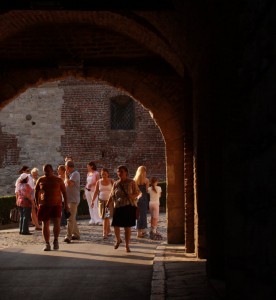 The sweat dripped down my face as I gyrated to the throbbing techno trying to keep up with a six-foot Serbian bombshell that had taken a keen interest in me, or at least my obvious American appearance. We walked out to the deck of the club, docked on the banks of the river Danube in downtown Belgrade to escape the heat of the nightclub and catch a breath of fresh air. As I took a sip of Jelen Pivo, the standard Serbian beer, my mind was fighting an epic battle between my brain telling me to get some rest and my eyes telling me to keep flirting with this beautiful Serb. My body was running on fumes, I had not slept in two days after flying from Boston into Belgrade but I was smitten by the interest this girl was showing in me. I had only begun my Balkans excursion yet it was already becoming apparent that it would be an unforgettable experience.
The sweat dripped down my face as I gyrated to the throbbing techno trying to keep up with a six-foot Serbian bombshell that had taken a keen interest in me, or at least my obvious American appearance. We walked out to the deck of the club, docked on the banks of the river Danube in downtown Belgrade to escape the heat of the nightclub and catch a breath of fresh air. As I took a sip of Jelen Pivo, the standard Serbian beer, my mind was fighting an epic battle between my brain telling me to get some rest and my eyes telling me to keep flirting with this beautiful Serb. My body was running on fumes, I had not slept in two days after flying from Boston into Belgrade but I was smitten by the interest this girl was showing in me. I had only begun my Balkans excursion yet it was already becoming apparent that it would be an unforgettable experience.
My parents offered me a choice of high school graduation presents: a new iPod or an all-expense-paid two week trip to Europe. As if my body had a pre-existing tick, I responded abnormally fast, claiming the European vacation. Part of the conditions of going to Europe was that my older brother, Jamie, “had” to come along. Much to his delight, I deferred most of the planning to him, the historical buff and family European expert. Jamie is three years older than me, and at the time he was in between his junior and senior years at Dartmouth. We decided that we wanted to travel somewhere obscure; somewhere that we knew no one had ever been. The Balkans fit our profile perfectly. The finally peaceful, former Yugoslavian states had plenty to offer from beautiful women, sublime beaches, exciting nightlife, and an absolutely superb exchange rate.
To avoid the heavy midsummer tourist traffic, we decided to leave home the last week of August. Jamie and I had the advantage of attending colleges on identical academic schedules, so we could afford to travel so late in the summer. In fact, most of my friends had already left for college by the time I left for Belgrade. We used our down time both at home and on the trans-Atlantic flight to create a rough itinerary of cities we were going to visit and when. Prior to taking off, we had only booked two nights in a youth hostel in Belgrade, aptly named “Traveler.” Our plan was to remain relatively uncommitted, but have a general route, in case there were places we wanted stay longer in or avoid altogether.
We were greeted in Belgrade by a colossal heat wave that had temperatures pushing triple digits and humidity that rivaled anything I have ever felt in my life. The city itself had a distinct Soviet feel in both the architecture and Cyrillic signage. It was hard to ignore the bombed out buildings, still carcassed as a result of the mid-90’s war that ravaged and ultimately tore apart Yugoslavia. It was hard to truly capture what we expected from Belgrade and the Serbian people, but we were certainly a little bit skeptical of them. Their reputation of being over-aggressive and conniving preceded them, even in the guide books. However, we were met with intrigue by the locals who were not used to seeing Americans.
Our hostel was run by a young man named Milos, who could not have been any older than twenty-five. His English was far better than I had expected, and he was not shy about testing his fluency, quickly engaging Jamie and I in a conversation about Serbia’s biggest national hero, Gavrilo Princip. Princip, ethnically a Serb, of course was the man who assassinated the Archduke Franz Ferdinand and his wife Sofia, an event many credit as starting World War I. This was so interesting because Milos spoke of Princip as if he was still alive and relevant; Jamie and I had grown up in an environment where national heroes become famous one day then disappear into the irrelevance the next.
After our discussion of Serbian national heroes, which also included tennis star Novak Djokovic and basketball stars Peja Stojakovic and Drazen Petrovic (actually a Croat, but lived during the Yugoslavia time), we left to go visit the Cathedral of Saint Sava, the largest Eastern Orthodox cathedral in the world.
(To understand Yugoslavia, Jamie explained, you need to realize that there was both an ethnic conflict and a religious conflict that tore the country apart into present day Slovenia, Serbia, Montenegro, Croatia, Bosnia and Herzegovina, Macedonia, Albania and, depending on which diplomat you talk to, Kosovo. However, the geographical and ethnic separations were certainly based upon religious unrest. Before I get too complex, understand that ethnic derivations, nationalities and religious affiliations are not necessarily independent variables. Serbs are Eastern Orthodox, Croatians and Slovenians are Catholic, and Bosniaks are Muslim. A man can be a Serb, ethnically yet live in Croatia, thus technically being a Croatian by citizenship but a Serb by ethnicity.)
The cathedral was monumental in appearance, yet plain and lacking in the artistic character, whether it is the paintings at the Sistine Chapel or the architectural wonders of the Mosques in Mecca. Quite frankly, the Cathedral of Saint Sava was just a gigantic, off-white chapel, equipped with three sets of doors large enough to let an eighteen-wheeler drive through, and devoid of anything “churchly” inside (due to construction). The eerie emptiness inside the cathedral was a symbol of a resurgent Serbia, a pamphlet we picked up in the gift shop told us. The once proud state was forced into emptying its most prized religious site of all valuables because of a legitimate fear of having their church’s patriarchal temple bombed. The cathedral will once again glow with art and spirit, the pamphlet explained, but it must first mend its wounds along with its faithful Serbian people.
We left Belgrade with a wholly different view on the entire region. The nationalism overwhelmed Jamie and I; we had never seen anything like it back home, not even in our post-9/11 world. Our bus drove on local roads, through small farming communities and in every village, Serbian flags flapped in the wind on telephone wires and flag poles. Along the route to Sarajevo, we began to climb into the Dinarides, or the Dinaric Alps, named after Dinara Mountain, a prominent peak on the Bosnian-Croatian border. Sarajevo, which entered into view from the mountain pass, was a majestic city nestled into a large valley. Surrounded by rough terrain gave Sarajevo a sheltered feel, almost as if the city had mountains for castle walls. Ironically, it was those “castle walls” that enabled Serbian and Croatian to gain an advantage while launching offensives from up high in the mid-90s. Sarajevo held amazing intrigue, yet Jamie and I were most nervous about how we would be received in such a foreign city.
Our bus dropped us off in front of a mosque, one of hundreds in the predominantly Muslim Sarajevo. It was a dark building, with an almost hidden gate, which from what we could tell, led to some sort of grassy courtyard. To the left of the courtyard sat the actual mosque, a one story building with rounded walls and ceilings. Directly next to the mosque stood the four story minaret, with a pronounced spire at the top and loudspeakers hanging from three sides. Granted it was only one mosque of many in Sarajevo, there was very little traffic around the mosque for a city that is more than 90% Muslim. Later on, we realized that Sarajevo was quite secular, but our initial reaction to seeing so many minarets poking through the city’s skyline was that we were visiting a highly religious city, and we felt like true outsiders.
From there we hiked up to our hostel, a decent climb, but worth it because of the views from the hostel porch. On our way up, we passed a grave yard with geometrically scattered, identical white grave stones. We would later visit the grave of Peter, our hostel host’s father, a victim of the war. Peter gave us a poignant explanation of how he had to take control of the day to day operations at the hostel when he was only thirteen, while his mother handled the books. While solemnly offering our condolences to our gracious host, I happened to notice that every grave I saw had death dates between 1994 and 1997. Hundreds of deaths in such a short span. It felt like a military graveyard, but these were all innocent civilians. Such somberness set the mood for the vibrant, yet quiet city we were anxious to explore.
The next morning, I was jolted out of bed at around 5:30 by an echoing prayer, eerily blasting through loud speakers on all the mosques throughout the entire city. I was quickly calmed by one of the many Australian travelers in the hostel, who explained that it was simply just a Muslim call to prayer and that this happened five times a day. Jamie and I rose soon after to get an early start to our day of exploration. We first made our way through the bazaar at the bottom of the hill, weaving our way through rug salesmen, tea cafes and many young men hawking Zlatan Ibrahimovic jerseys (“Zebra” as he is affectionately known in Bosnia, is an expatriate who fled to Sweden as a child during the war and subsequently became an international soccer superstar. They were hawking his Swedish national team jersey; that shows how rabid the fans were about Ibrahimovic – even after he chose his adopted nationality over his birth nation, the Bosnians still love him). After stopping for a quick pastry at a local bakery, we headed straight for the spot of Franz Ferdinand’s assassination. Expected a large statue or monument memorializing the event, we were astonished to find only a small plaque, written in Bosnian and English, explaining the significance of the site.
By the time we had finished exploring Sarajevo, we headed back to the hostel to question Peter about the assassination site. He immediately grew tense and spoke in a noticeably reserved manner. Gavrilo Princip’s actions, Peter explained, are among the most embarrassing for Bosnians. He said that even before the assassination, Bosnians disagreed with the radical Serbian movement that claimed responsibility for the assassination. Though he earnestly admitted that part of the reason Princip is still shunned in Sarajevo is because he is a Serb and the Bosnian people could not justify celebrating a Serb, their primary enemy in the Yugoslavian Civil War.
Emotionally moved by our entire experience in the recovering and picturesque Sarajevo, we knew we needed a break from the remnants of war. Fortunately, our journey led us next to Dubrovnik, a blossoming city on the Adriatic coast in Croatia, known for its romantic scenery and incredibly salty ocean water. But before we hit the coast and passed through the white-washed towns and arid terrain of Croatia and Bosnia, our bus made a stop in Mostar, a smaller Bosnian city near the Croatian border.
We made a spur-of-the-moment decision to get off the bus and continue onto Dubrovnik later in the day, allowing ourselves a few hours to see one of the most symbolic cities in the entire region. Though not possessing any geographical significance, Mostar became a popular reference during the war because of its city-wide division between equal populations of Bosniaks and Croats. Like the proverbial train-tracks, the two sides were divided by the Neretva River. During the war, Croatian bombers destroyed the Stari Most (Old Bridge) an icon of the city and a symbol of unity between the two sides. The bridge remained in shambles for years after the war, finally being rebuilt in 2004.
As Jamie and I sat eating cevapi, a Slavic dish impossible to eat enough of, that was made up of ground beef, pork and lamp formed into little rolls with onions then fried and served on a flat bread with more raw onions, we watched the Bosnian Olympic diving team pass around a hat collecting money from tourists in an attempt to raise enough to get to Beijing and back for the 2008 Summer Olympic Games. After they reached a certain amount of money collected, one of the divers would hose down with cold water then majestically dive off the bridge into the chilly Neretva waters. These divers exhibited unmistakably charisma, never showing frustration at their lack of funding, knowing full well that their American, Australian and other challengers were receiving thousands from sponsorship deals. Considering the Bosnian diving team had yet to exist in 2004, it was quite an accomplishment that they had even qualified for Beijing, and they were extremely excited to share their achievements with their fellow Bosnian people.
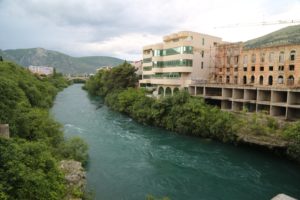
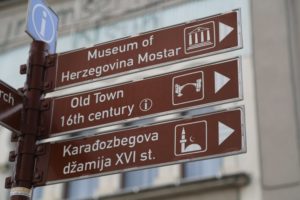 Mostar was the last city we visited with bullet holes in buildings. The effects of the war had not yet disappeared. Despite the reconstruction of the iconic Mostar Bridge, there was still a crippling divide between Bosniaks and Croats in the city. On one side of the Neretva there were cafes, well kept gardens and many flying Croatian flags. On the other side, there was an expansive bazaar, ransacked store fronts and blue and yellow Bosnian flags proudly waving in the breeze. The city foreshadowed the juxtaposition of Croatian and Bosnian culture.
Mostar was the last city we visited with bullet holes in buildings. The effects of the war had not yet disappeared. Despite the reconstruction of the iconic Mostar Bridge, there was still a crippling divide between Bosniaks and Croats in the city. On one side of the Neretva there were cafes, well kept gardens and many flying Croatian flags. On the other side, there was an expansive bazaar, ransacked store fronts and blue and yellow Bosnian flags proudly waving in the breeze. The city foreshadowed the juxtaposition of Croatian and Bosnian culture.
Croatia and Slovenia had a completely different feel than Serbia and Bosnia did. In Dubrovnik, Croatia there were street-side cafes on every corner, palm trees lining the roads and topless beaches down by the Adriatic. I commented to Jamie upon arrival that I felt as if I was in a completely different world, not that it was a more beautiful location necessarily but more because it became apparent that Croatia had lifted itself up from the war far quicker than Serbia or Bosnia.
What was consistent throughout Croatia and Slovenia was the sense that the locals were desperate to westernize themselves; they felt the best way to do so was to create distance between the concept of a Croatian or Slovenian identity and a Yugoslavian identity. In Croatian marinas, we saw the multi-million dollar yachts of some of Western Europe’s swankiest business men. In Slovenia, we noticed all the signs had German subtitles, to appease tourists from their northern neighbor Austria. In fact, Slovenia had already joined the European Union and used the Euro as currency while Croatia was campaigning hard to do the same. Of course, Croatia and Slovenia were beautiful places with incredibly nice people and many tourist offerings, but they lacked an original cultural identity. Belgrade and Sarajevo were so distinct in their ethnic feel that you felt completely separated from the Western world.
I have never lived in a post-war world. I could never imagine what America would be like after a massive civil war on its own soil that resulted in the formation of multiple new nations. What I can tell you is that Serbia is desperate for acceptance by Western Europe, prosperous but idling because of a Soviet-bloc stigma. I can tell you that Bosnians just want to be safe from attack, so their once proud people can build a strong, successful nation and rid themselves of their war-ravaged, third-world reputation. I can tell you that Croatians are insecure about their standing in Europe; that they long to be part of the European Union and introduce the Euro, like their Slovenian neighbors have. I can tell you that I visited a special place in this world, thought of only by its civil war and ethnic segregation, but a place burgeoning with stunning tourist attractions and vibrant cities.
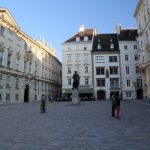
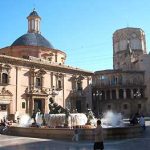
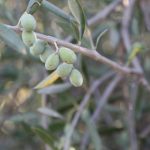
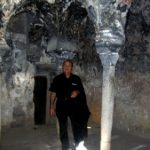
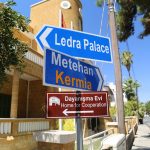
Leave a Reply